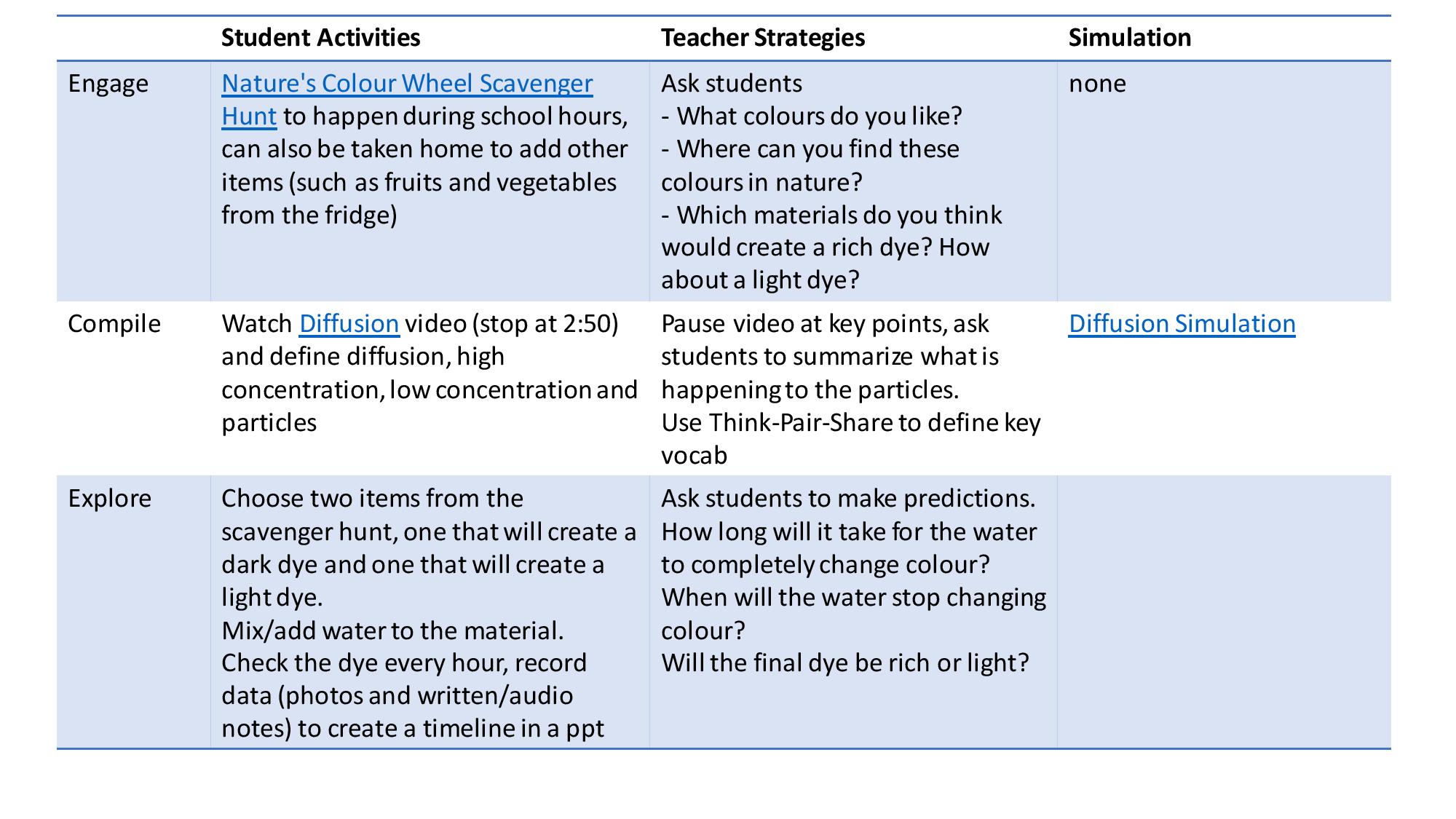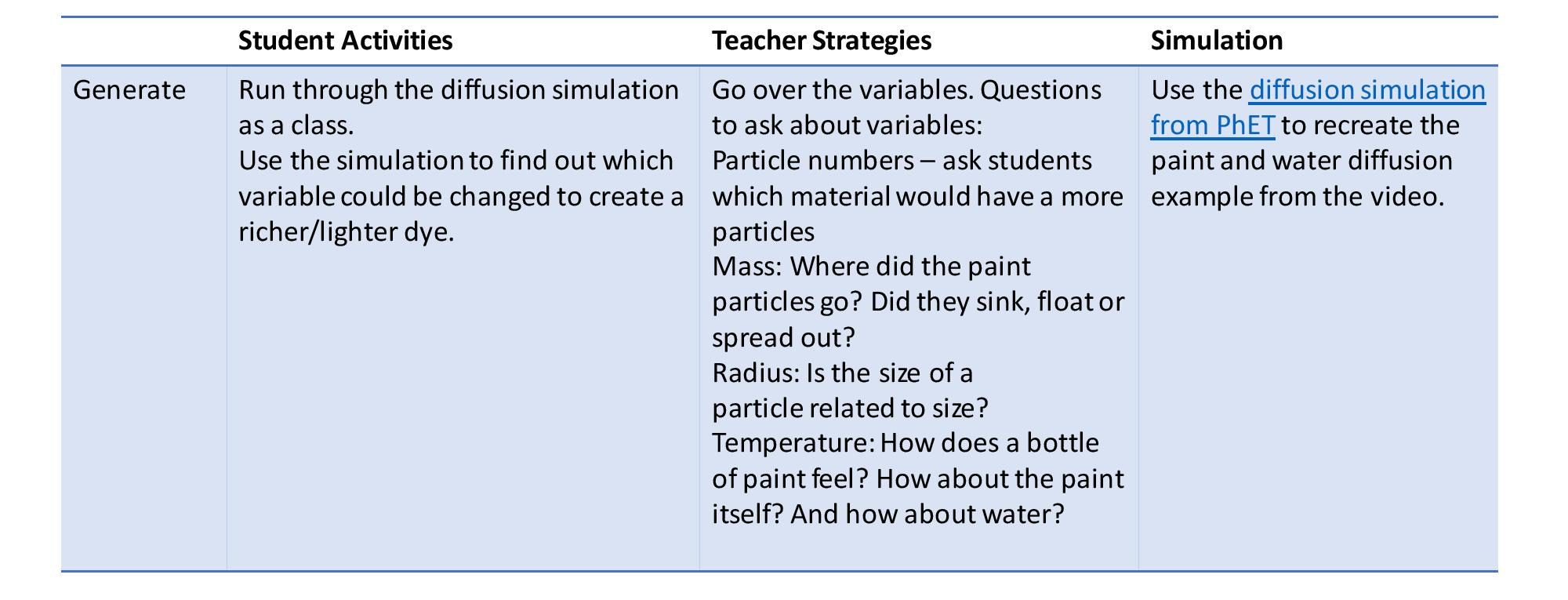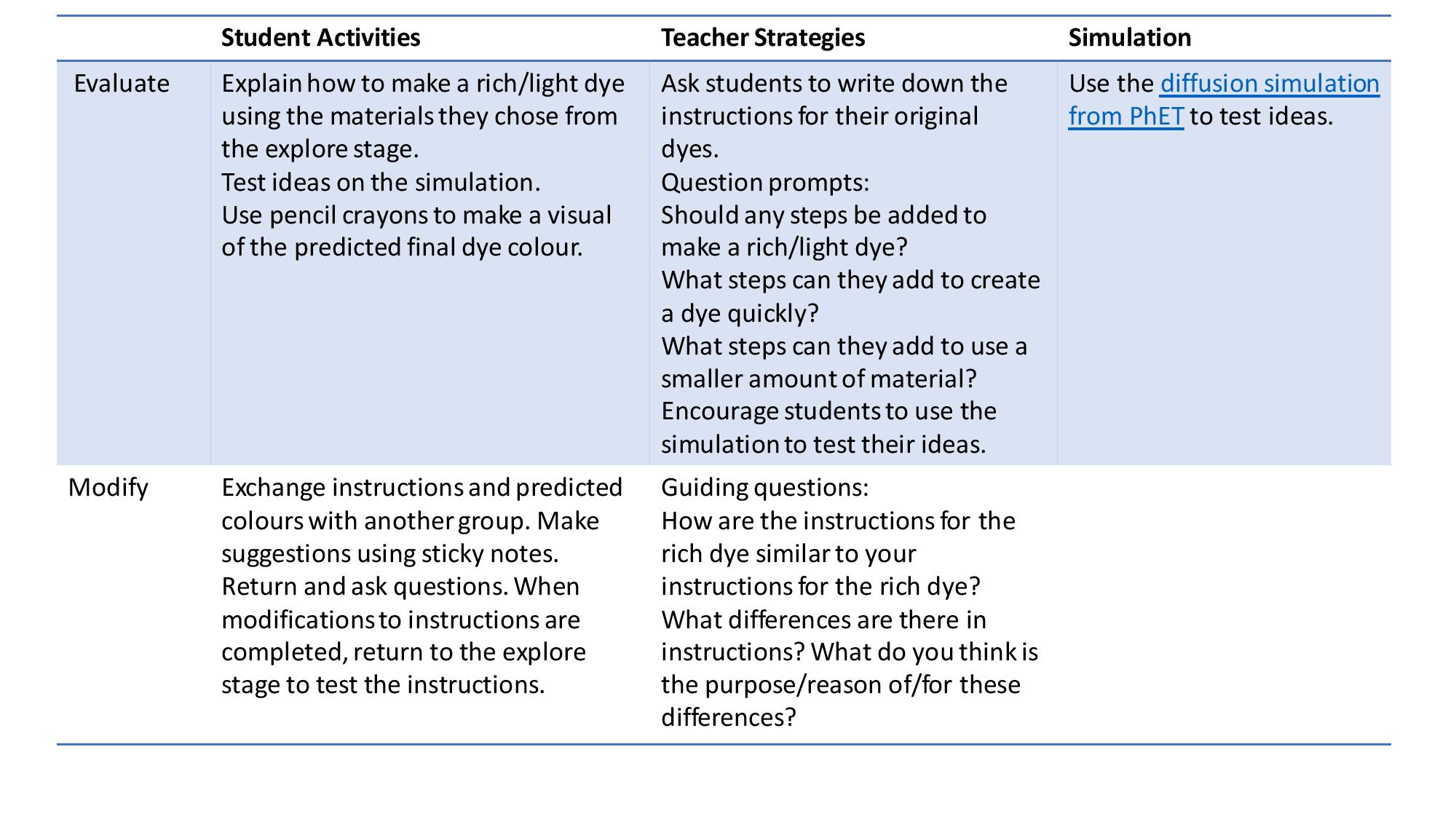There’s an Art lesson where students learn to use Australian aboriginal patterns to create a batik cloth. Part of that unit involves creating homemade dyes. Due to lack of time, last school year the homemade dyes were created by the Art teacher and the final product was brought to class for discussion, however, like Friedrichsen and Pallant (2007) noted, students tend to memorize rules without understanding why. I have noticed this tendency for students to memorize without understanding, perhaps this is exacerbated by language barriers–almost all of my students are English Language Learners. If the learning environment doesn’t require students to apply or synthesize their learning, memorizing is the easiest and safest way to progress through the science curriculum. Friedrichsen and Pallant (2007) believe that students need to visualize the movement of particles and to predict the effect at a cellular level. Most of the lessons I saw online were targeted towards middle school and secondary students, but I think it could be accessible to Grade 3 students if we focus on a few key words: diffusion, high/low concentration, particles (Friedrichsen & Pallant, 2007).
Link to modified T-GEM chart: G3Diffusion-T-GEM.mod
I used the T-GEM cycle and added two phases from Friedrichsen and Pallant (2007, p. 23):
Engagement
“(a) to elicit students’ prior understandings and misconceptions,
(b) to focus the students’ attention on the new concept and
(c) to provide motivation for the lessons that follow.”
Exploration
T-GEM is great because not all classrooms will have the resources or time to do a proper physical, hands-on activity, but when possible I think this should be part of the cycle.
I think this could be incorporated into the homeroom teacher’s (my) science class. This could fall into the Land, Sea and Sky portion of science when we discuss water habitats and the importance of taking care of our environment.
References
Friedrichsen, P. M., & Pallant, A. (2007). French fries, dialysis tubing & computer models: Teaching diffusion & osmosis through inquiry & modeling. The American Biology Teacher, 69(2), 22-27.



